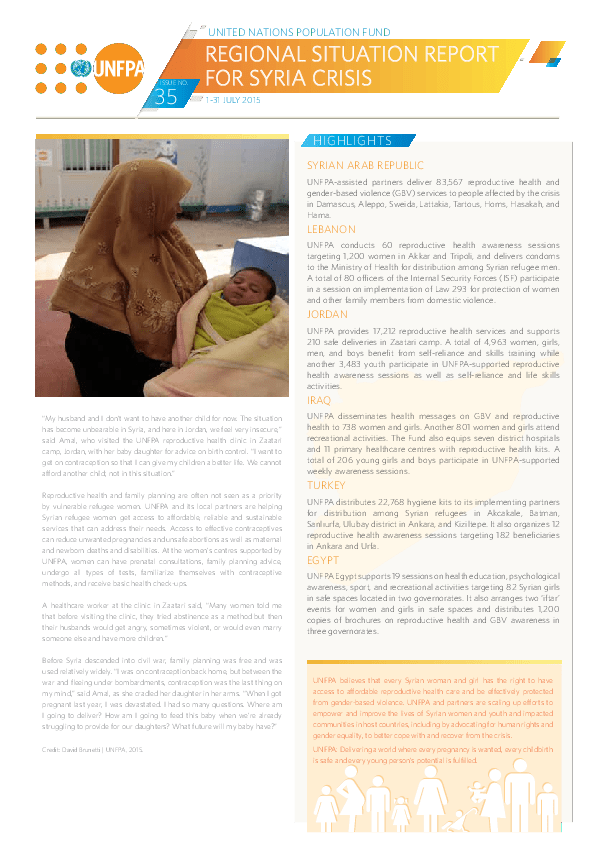Violence has escalated in several parts of Syria. Of the 4.6 million people living in hard-to-reach areas, 422,000 remained besieged. This included 26,500 people besieged by non-state armed groups in Nebula and Zahra, and 228,000 people besieged by ISIL in the government-controlled western neighbourhoods of Deir-ez-Zor. The number of violence-affected people with limited access to life-saving reproductive health and gender-based services has continuously been on the rise.
Syrian refugees continue to face immense challenges, fueling grave concerns about their vulnerability and protection-related issues. According to a study released by Care International in July, there is growing evidence that after five years of conflict, an increasing number of Syrian refugees in Jordan have exhausted their means of subsistence.
Iraq, which is hosting 251,499 Syrian refugees, witnessed an increase of 1,483 new cases, which represents a 0.7 percent increase in overall case load in July, compared to June. One year has passed since the start of the internally displaced population crisis in Iraq. According to OCHA, there are now 2.8 million internally displaced persons, and of these, 1.5 million live in conflict-affected areas.
